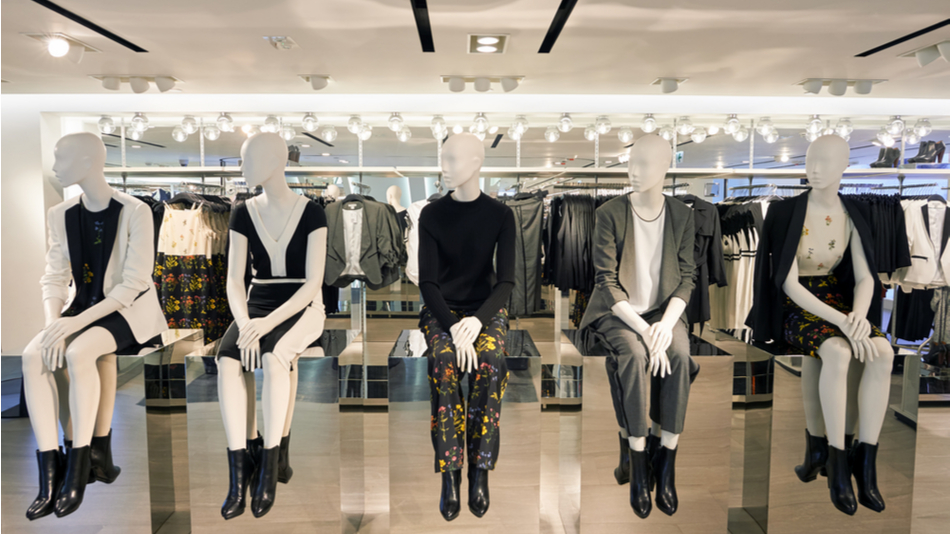Fast fashion retailers exist in an ever-changing world of ephemeral trends. Their operations teams have the challenge of uniquely high product turnover rates, which affect everything from production to pricing. However, thanks to fashion industry technology powered by AI and machine learning, fast fashion operations teams can arm store staff with the information and tools to thrive and compete in this dynamic, saturated market.
Store Walks and Inventory Control
Retailers traditionally rely on in-person store walks to identify inventory issues and monitor customer experience. To support store walks, analysts collect data manually and enter it in Excel spreadsheets to determine what a store does right and where it needs improvement. They make conclusions, deliver guidance to store teams, and hope it sticks afterward.
This labor-intensive process is inefficient for fast fashion brands for two reasons. First, just-in-time inventory control is critical in fast fashion to keep up with constant product turnover due to short-lived fashion trends. And second, as there is such high competition to be the first retailer to bring the latest styles to the consumer, that customer experience needs to be more closely monitored to ensure shoppers’ needs are met and stock is turning over.
There are machine learning tools designed to make up for store walks’ limitations. Specifically, fashion industry technology utilizes advanced data-crunching algorithms to help fast fashion retailers more closely align supply and demand. For instance, retailers can apply analytics to customer purchase data to predict which fashions will sell in a given door and encourage impulse buys. The Wall Street Journal notes how H&M uses AI “algorithms to analyze store receipts, returns and loyalty-card data” to ensure stock meets local customer demands. Such information is of the utmost importance in the industry where this year alone stores like H&M and Under Armour had billions in unsold inventory. This kind of chronic waste can be lethal for retailers and affects a brand’s valuation, as will be discussed later in this article.
Retailers can also take advantage of AI tools analyze social media sentiment to understand the tone of conversations around their brand and the industry. Specifically, H&M is “analyzing data on a large scale from blog posts, search engines and other sources” to predict trends ahead of time and gain a competitive edge. Thus, fashion industry technology that utilizes AI can not only help fast fashion companies “create clothes that their customers want to buy,” but also help them be forward thinking to maximize sales and reduce waste.
Operational Issues
There are several unique operational issues facing fast fashion retailers today. Brands like Zara and Uniqlo carry different lines of clothes, stocking basics like year-round tees and pants, as well as featuring limited-edition apparel inspired by time-sensitive trends. The nature of the product category affects the operational design of the supply chain. For items with a short selling window “the supply chain should prioritize lead time over cost, while for core basic products… the supply chain should prioritize cost reduction over speed to market,” according research by Herriot Watt University. AI and machine learning’s ability to predict trends and inform store buys can help operations teams get time-sensitive, on-trend items to the stores as efficiently as possible.
Another operational concern heightened for fast fashion retailers is informational demand. Generally, fashion customers want to know a garment’s fabric composition, where it is made, and any number of additional product attributes. According to one study, 56% of online consumers abandon a purchase because of lack of product or delivery information. In fast fashion specifically, products have short shelf lives (sometimes as little as 15 days), and an extraordinary amount of information needs to be made available in a very short window of time. Retailers must constantly update product attributes, only to have them quickly expire. Here is yet another area in which machine learning can put a fast fashion retailer at an advantage. Fashion industry technology can track and organize this information at previously unimaginable speeds and make sure merchandise planners are equipped with the data needed to move merchandise.
Promotions and Pricing Strategy
As mentioned earlier, fast fashion retailers who deal with accelerated rates of product turnover are prone to being left with taxing amounts of unsold inventory. To unload the overstocked goods, stores must slash prices, which results in decreased margins and brings down the brand’s valuation. However, by implementing machine learning tools (like those discussed above), retailers can tailor inventory to meet local demand and circumvent this kind of pricing issue.
Beyond proper inventory control, fast fashion retailers can use machine learning to understand where “customers perceive value” and then to apply appropriate promotions. Technology collects and sorts customer data to give fast fashion brands a comprehensive pricing strategy with detailed information on every geographic sector. According to one recent study, “[t]he result can be margin and sales lift of 3 to 6 percentage points.”
In addition to assisting with pricing strategies, fashion industry technology can help brands focus on the bigger picture. Rather than getting mired in the weeds of pushing products out with constant promotions, brands can utilize smart technology to create customer loyalty. Zara, for example, strives to create brand “evangelists”—loyal shoppers who tweet, follow, and like Zara across social media platforms to spread the good word. In this way, Zara advertises its worth without succumbing to the trend of constantly cutting prices and depleting already-thin margins.
The Future of Machine Learning is Here
Nowhere is an emphasis on technology more important than in the world of fast fashion. As more big-name fast fashion brands utilize machine learning and AI to manage inventory, improve customer experience, stay on trend and price effectively, these tools are becoming ever more vital to help brands compete. Fast fashion retailers must fight not just harder, but smarter, to carve out a niche for themselves in a highly saturated market.
Take a look at our solutions page to learn how CB4’s machine learning software helps retailers save time, improve in-store execution, and elevate customer experience.



